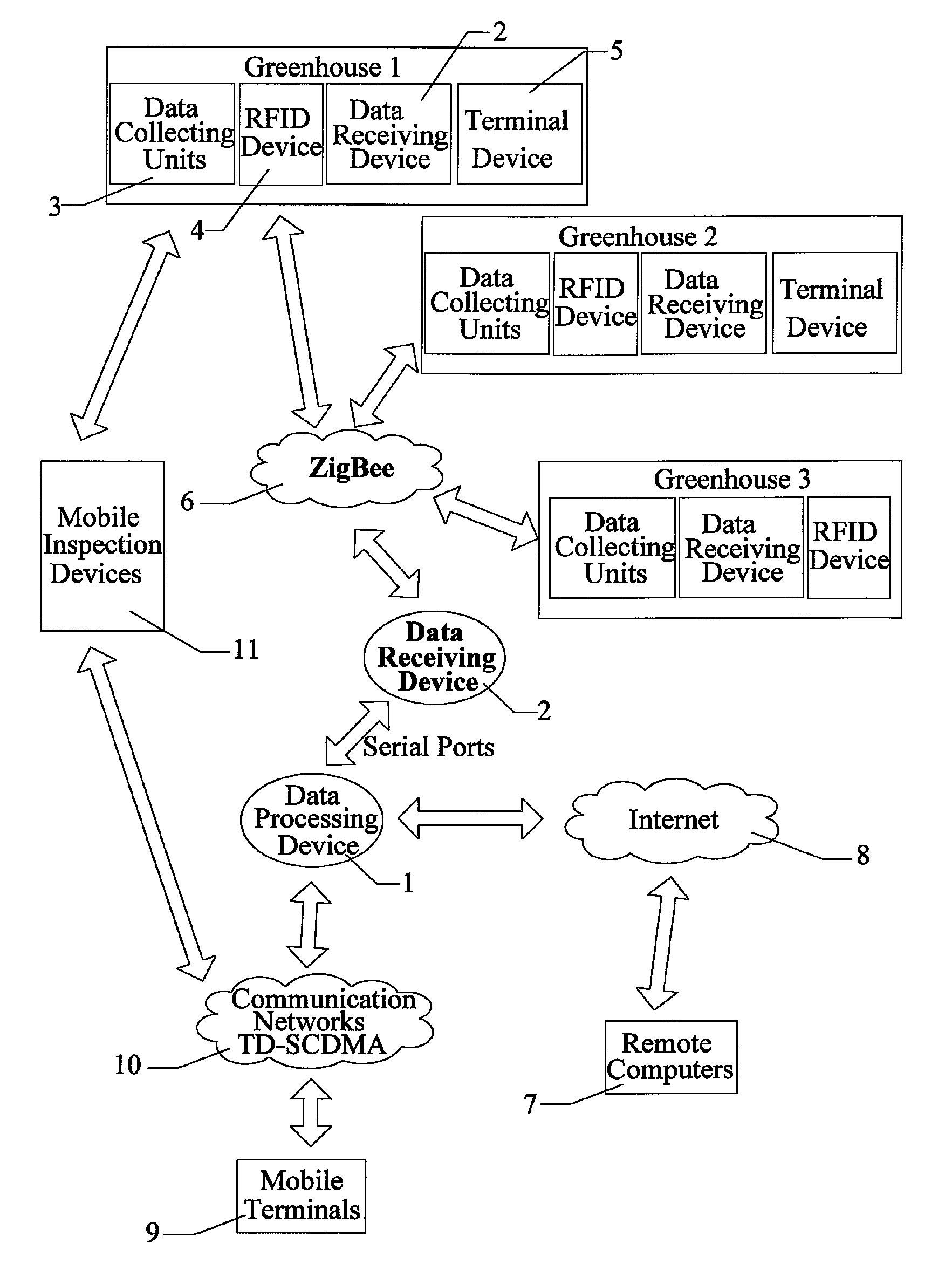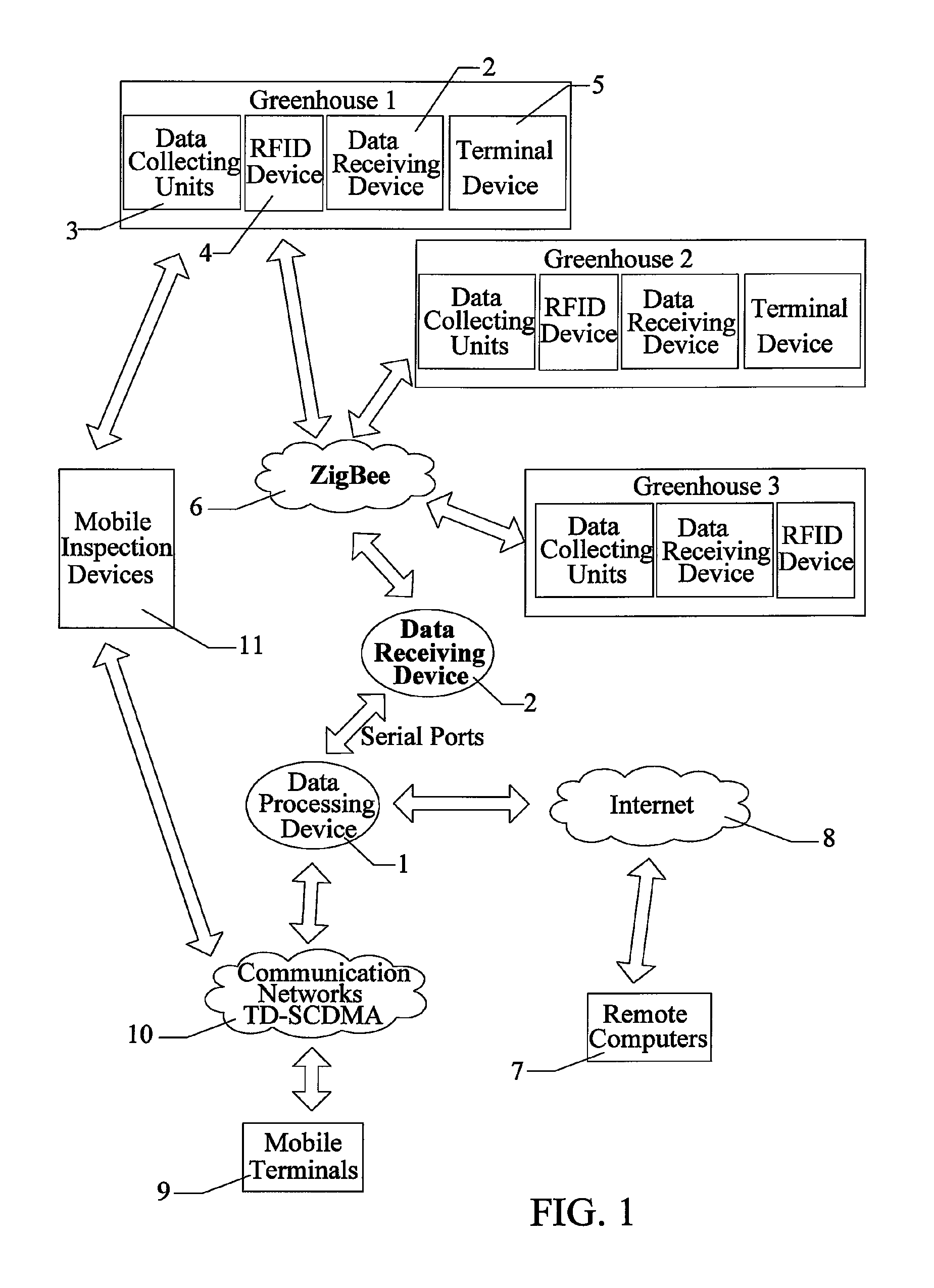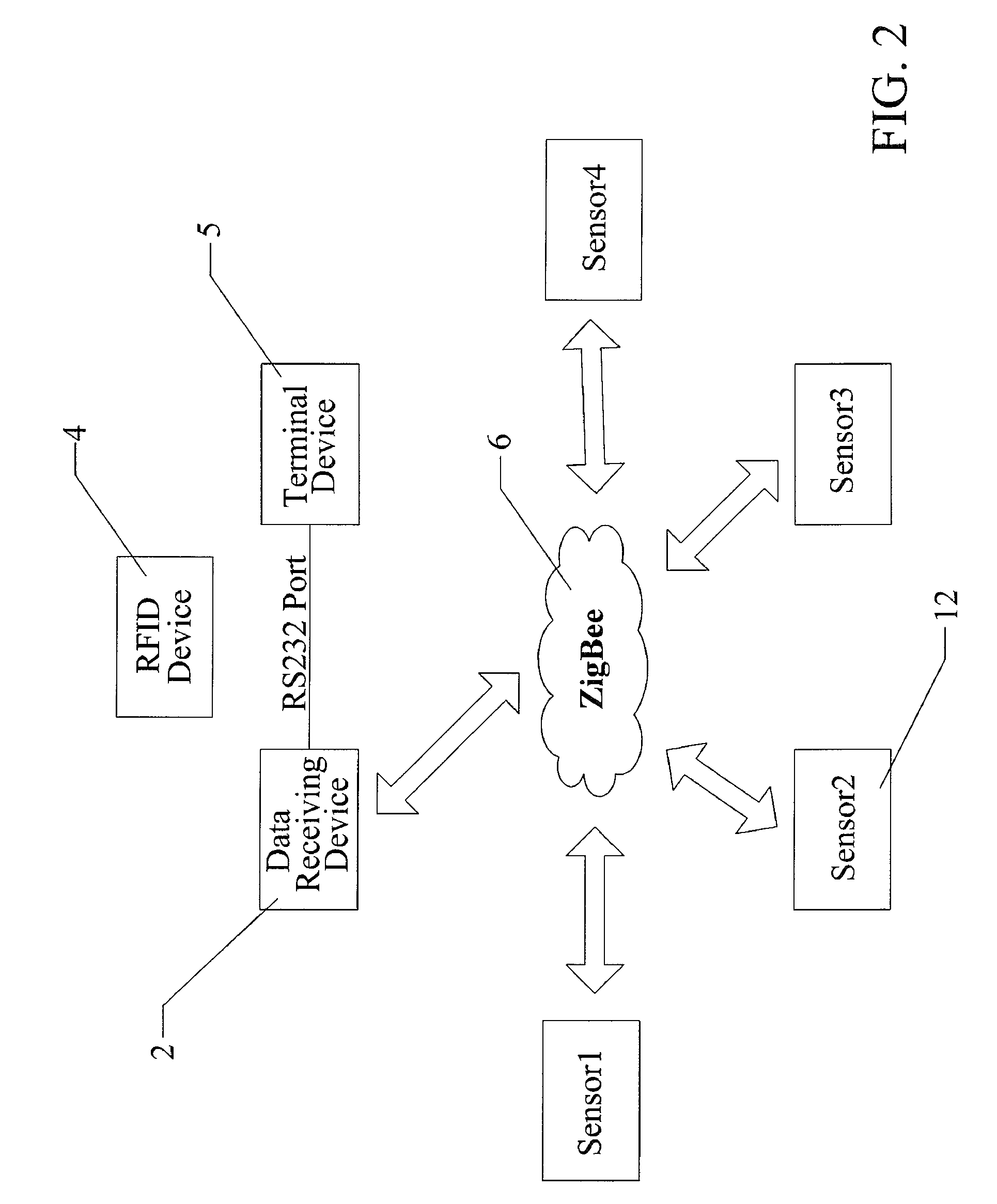Internet of things based farm greenhouse monitor and alarm management system
a technology of alarm management system and farm greenhouse, applied in the field of internet of things based farm greenhouse monitor and alarm management system, can solve the problems of low efficiency, large volume of intelligent system, affecting the easy management of greenhouse, etc., and achieve the effect of improving the quantity and quality of crops, reducing the cost of automatic management of greenhouses, and improving the quality of crops
- Summary
- Abstract
- Description
- Claims
- Application Information
AI Technical Summary
Benefits of technology
Problems solved by technology
Method used
Image
Examples
embodiment
[0032 One
[0033]The functions of the system in this invention mainly include: (1) collecting environmental parameters such as air temperature and humidity, illumination, soil temperature and moisture, etc. in real time; (2) alarming practitioners automatically according to the data collected with pre-set types and conditions of alarm; (3) crop information management; (4) user management; and (5) management of sensor nodes and other hardware.
[0034]FIG. 1 illustrates the overall architecture of this invention in embodiment one. In this figure, the internet of things based farm greenhouse monitor and alarm management system includes a data processing device 1, a data receiving device 2, data collecting units 3, a RFID device 4, terminal devices 5, ZigBee networks 6, remote computers 7, the Internet 8, mobile terminals 9, communication networks 10, and mobile inspection devices 11. The data collecting units 3 collect environmental parameters in real-time and send them to data receiving d...
embodiment three
[0047
[0048]In embodiments one and two, the data processing devices 1 need to connect to the Internet 8 to provide the service of data access, so that any other devices which connect to Internet 8 can access the service. If so, a domain name is needed, and it will add to the cost. For some greenhouses, it may not be necessary to make the service of data access available on the Internet 8, and those computers inside and mobile inspection devices 11 having the ability to access the data processing devices 1 are enough. In this case, the Internet 8 can be replaced by the local area networks 14. Meanwhile, the data processing devices 1 need to access the Internet 8, because the data processing device 1 will alarm users in the form of fetion that needs the Internet 8. Other computers in the local area network 14 can access the data processing devices 1 by their IP addresses. Mobile phones or other mobile devices connect to the system by local wireless networks.
[0049]The overall architectu...
embodiment five
[0054
[0055]The overall architecture of the embodiment five is as FIG. 8 illustrates, in which the system includes the data receiving devices 2, the data collecting units 3, the RFID devices 4, the terminal devices 5, the remote computers 7, the Internet 8, the mobile terminals 9, the mobile inspection devices 11, the data storage server 16, real-time monitoring units 24, and control the host 25. The data collecting units 3 in real-time collect environmental parameters (such as air temperature, air humidity, illumination, soil temperature, soil moisture, etc.) and transfer the data via data lines to the real-time monitoring unit 24, which is a timing chip and responsible for monitoring environment parameters in real time and for analyzing the data to judge whether alarm conditions are met, and, in which case, it will, through the serial cable, send boot alarm signals to the control host 25, which is normally turned off, and after receiving the alarm boot signals from the real-time mo...
PUM
 Login to View More
Login to View More Abstract
Description
Claims
Application Information
 Login to View More
Login to View More - R&D
- Intellectual Property
- Life Sciences
- Materials
- Tech Scout
- Unparalleled Data Quality
- Higher Quality Content
- 60% Fewer Hallucinations
Browse by: Latest US Patents, China's latest patents, Technical Efficacy Thesaurus, Application Domain, Technology Topic, Popular Technical Reports.
© 2025 PatSnap. All rights reserved.Legal|Privacy policy|Modern Slavery Act Transparency Statement|Sitemap|About US| Contact US: help@patsnap.com



